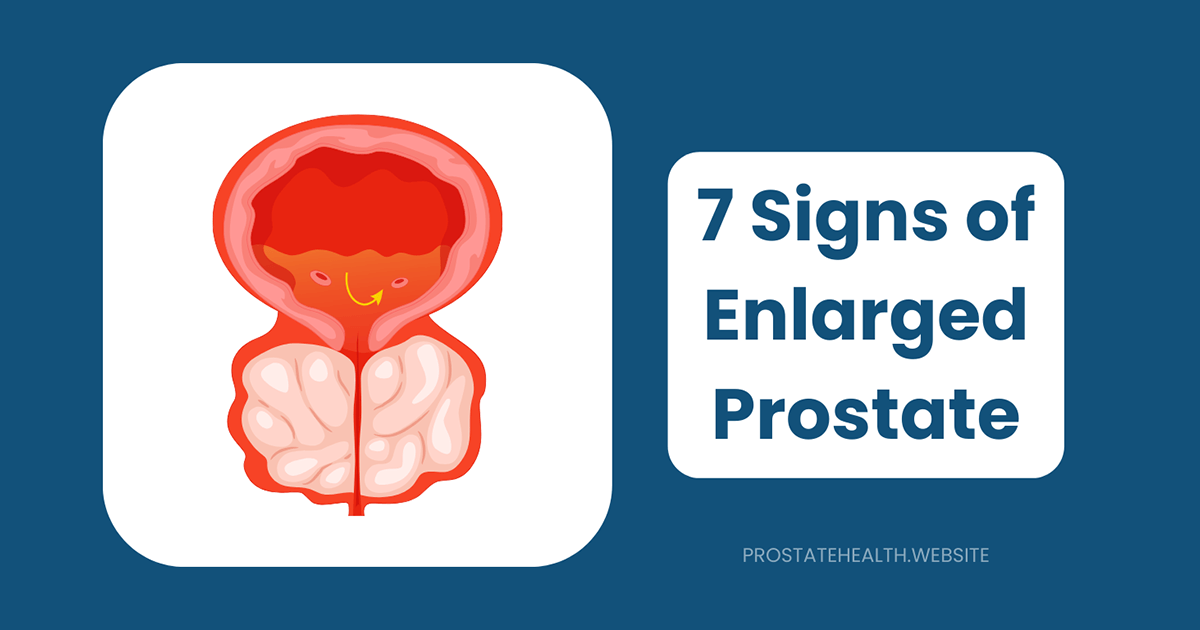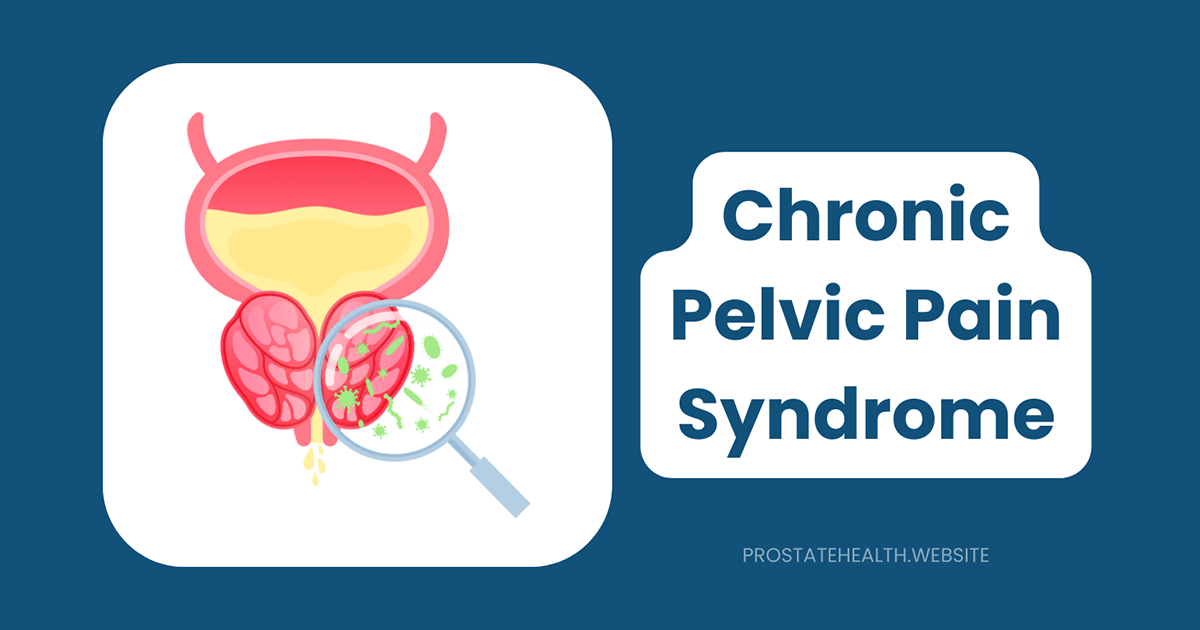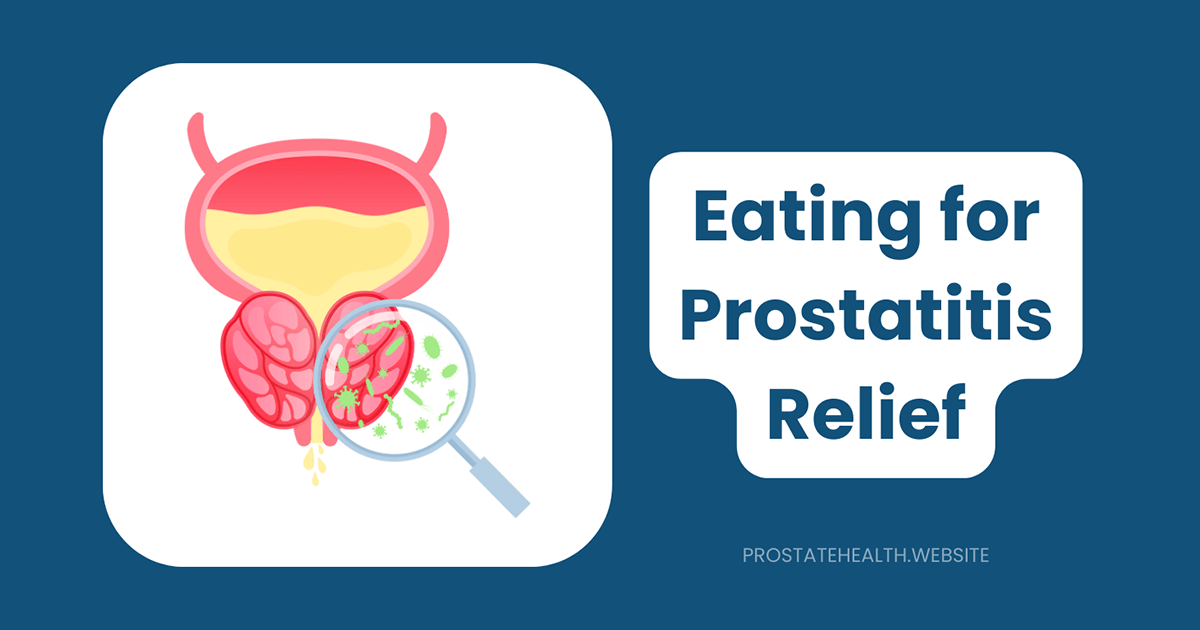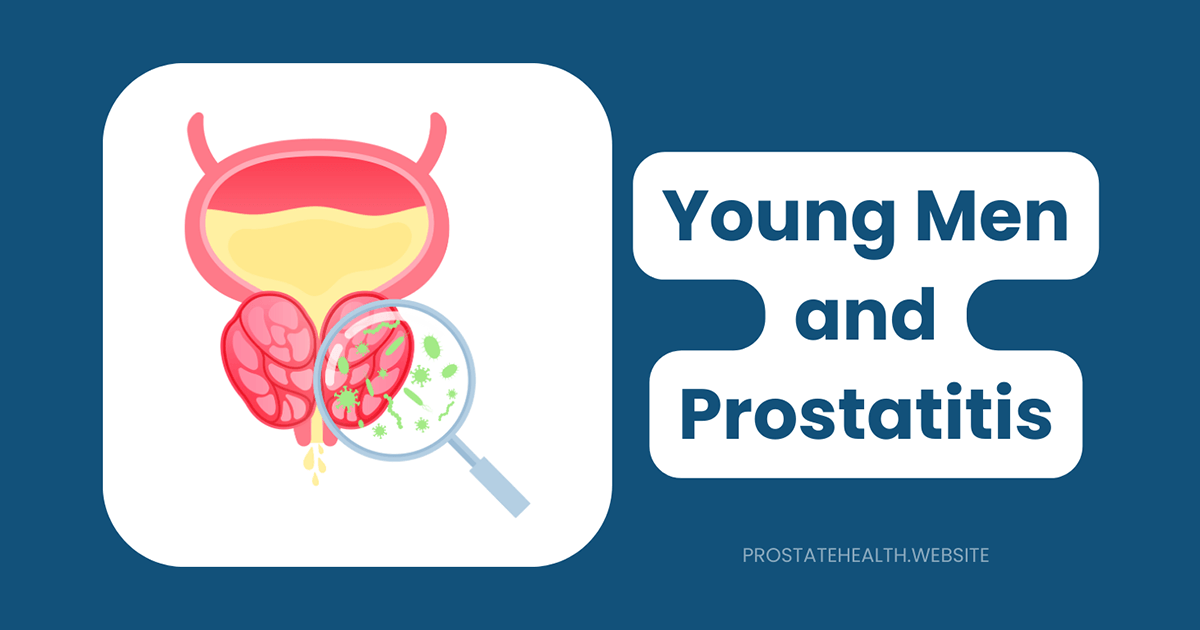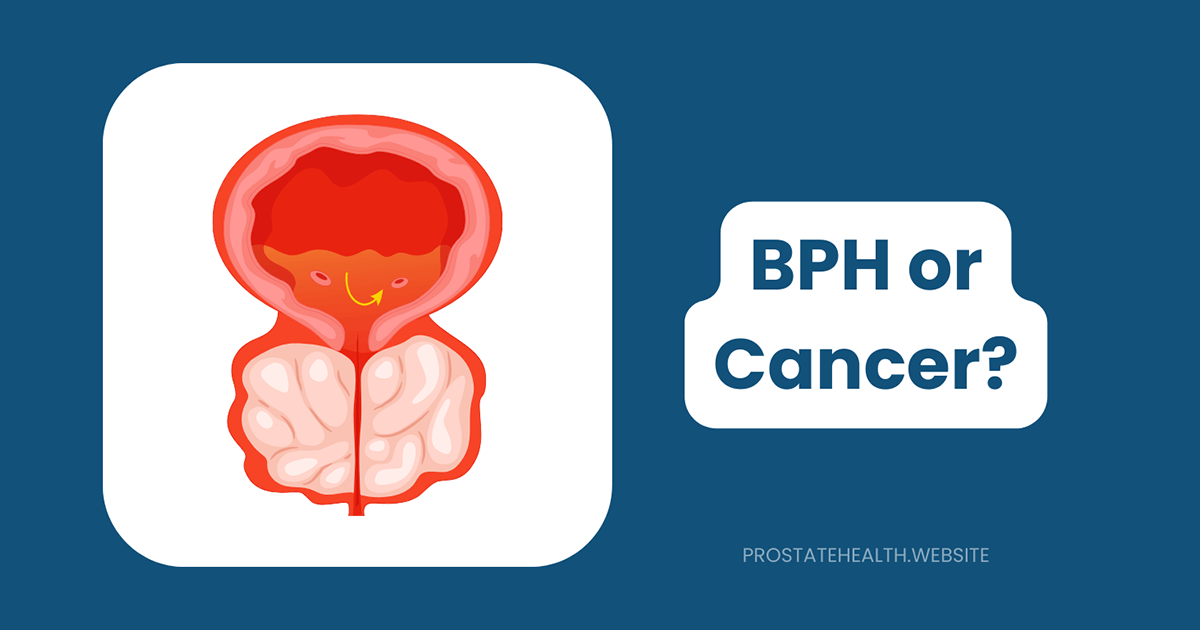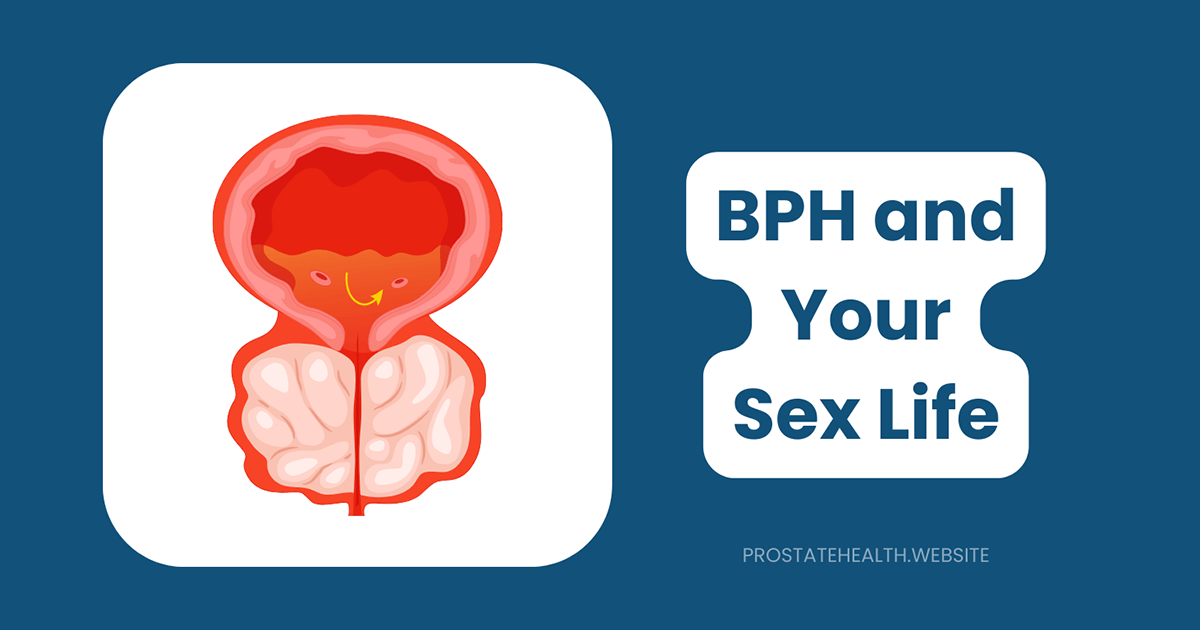Acute vs. Chronic Prostatitis: Understanding the Differences
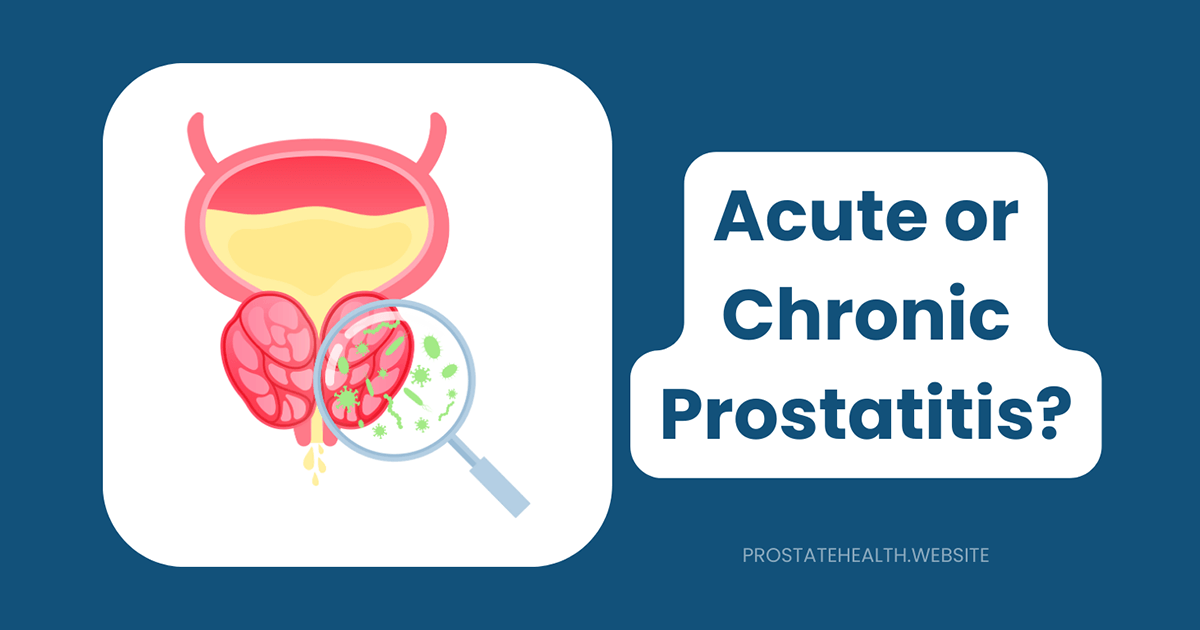
When it comes to prostate health issues, prostatitis is one of the most common conditions men face, affecting up to 50% of men at some point in their lives. Yet despite its prevalence, many men struggle to understand the different types of prostatitis and how they affect the body.
Throughout my years of advocating for men’s health, I’ve found that understanding the distinctions between acute and chronic prostatitis can help men recognize symptoms earlier, seek appropriate treatment, and ultimately experience better outcomes. Let’s explore these two forms of prostatitis and clarify what sets them apart.
What Is Prostatitis?
Before diving into the differences between acute and chronic forms, let’s establish a clear understanding of prostatitis itself.
Prostatitis is inflammation or infection of the prostate gland—a small, walnut-sized gland located just below the bladder in men. The prostate produces fluid that nourishes and protects sperm, forming part of semen during ejaculation. When this gland becomes inflamed or infected, it can cause a range of uncomfortable and sometimes serious symptoms.
According to the National Institute of Diabetes and Digestive and Kidney Diseases, prostatitis accounts for about 2 million doctor visits each year in the United States, making it one of the most common urological issues in men under 50.
The Four Types of Prostatitis
Healthcare providers classify prostatitis into four main categories:
- Acute bacterial prostatitis: A sudden bacterial infection with severe symptoms
- Chronic bacterial prostatitis: A recurring bacterial infection with persistent symptoms
- Chronic prostatitis/chronic pelvic pain syndrome (CP/CPPS): The most common form, involving pelvic pain without a clear infection
- Asymptomatic inflammatory prostatitis: Inflammation without symptoms, often discovered during testing for other conditions
For this article, we’ll focus on comparing the first two types: acute bacterial prostatitis and chronic bacterial prostatitis, as these represent the clearest distinction between acute and chronic forms of the condition.
Acute Bacterial Prostatitis: The Sudden Storm
Acute bacterial prostatitis is characterized by its sudden onset and severe symptoms. Think of it as a storm that arrives without warning, bringing intense but relatively short-lived disruption.
Causes and Risk Factors
Acute prostatitis typically results from bacteria entering the prostate through one of several routes:
- Urinary tract infections that ascend to the prostate
- Sexually transmitted infections
- Urinary catheters or other medical instruments
- Prostate biopsies
- Trauma to the pelvic area
The most common bacterial culprits include Escherichia coli (E. coli), which accounts for 50-90% of cases, followed by other gram-negative bacteria like Proteus, Klebsiella, and Pseudomonas species.
Risk factors for developing acute bacterial prostatitis include:
- Recent urinary tract infections
- Use of urinary catheters
- Recent prostate procedures
- Compromised immune system
- Urinary tract abnormalities
Symptoms: Impossible to Ignore
The symptoms of acute bacterial prostatitis are typically severe and develop rapidly, often over hours or days. They include:
- High fever (often over 101°F/38.3°C)
- Chills and shaking
- Severe pain in the lower back, pelvis, genitals, or perineum (area between scrotum and rectum)
- Intense urinary symptoms:
- Painful urination (dysuria)
- Frequent urination
- Urgent need to urinate
- Difficulty starting urination
- Weak urine stream
- Blood in urine (hematuria)
- Cloudy or foul-smelling urine
- General flu-like symptoms (fatigue, muscle aches, malaise)
- Pain during ejaculation
These symptoms are typically so severe that they prompt immediate medical attention. As one patient described it: “It felt like I had the worst flu of my life combined with someone constantly kicking me in the groin.”
Diagnosis: A Clear Picture
Diagnosing acute bacterial prostatitis is relatively straightforward due to the distinctive symptoms and physical findings:
- Physical examination: The prostate feels swollen, tender, and warm during a digital rectal exam (DRE). However, in acute prostatitis, this exam must be performed very gently due to extreme tenderness, and in some cases may be deferred to avoid discomfort and potential spread of infection.
- Urine tests: Urinalysis and urine culture typically show signs of infection, including white blood cells, bacteria, and sometimes blood.
- Blood tests: Blood cultures may be performed if there’s concern about the infection spreading to the bloodstream. Blood tests may also show elevated white blood cell counts and inflammatory markers.
- Imaging: In severe cases or when complications are suspected, imaging studies like transrectal ultrasound or CT scans may be ordered.
Treatment: Aggressive and Immediate
Acute bacterial prostatitis requires prompt treatment to prevent serious complications:
- Antibiotics: The cornerstone of treatment is antibiotics, typically given intravenously in severe cases or for patients who cannot take oral medications. Common antibiotics include fluoroquinolones (like ciprofloxacin), trimethoprim-sulfamethoxazole, or cephalosporins.
- Hospitalization: Severe cases often require hospitalization for intravenous antibiotics, pain management, and monitoring.
- Pain management: Prescription pain medications may be necessary to manage severe discomfort.
- Urinary catheterization: If urinary retention occurs, a suprapubic catheter (inserted through the lower abdomen) may be needed, as urethral catheters can worsen the infection.
- Supportive care: Increased fluid intake, rest, and over-the-counter anti-inflammatory medications can help manage symptoms.
Prognosis and Timeline
With proper treatment, acute bacterial prostatitis typically responds well:
- Symptoms often begin to improve within 24-48 hours of starting antibiotics
- Most men complete a 2-4 week course of antibiotics
- Full recovery is expected in the majority of cases
- Without proper treatment, serious complications can develop, including prostatic abscess, sepsis, or progression to chronic bacterial prostatitis
Chronic Bacterial Prostatitis: The Persistent Challenge
In contrast to the sudden storm of acute prostatitis, chronic bacterial prostatitis is more like persistent rain—less intense but longer-lasting and often more frustrating to manage.
Causes and Risk Factors:
Chronic bacterial prostatitis often develops from:
- Inadequately treated acute prostatitis: Bacteria that weren’t completely eliminated during treatment of acute prostatitis
- Recurrent urinary tract infections
- Structural abnormalities in the urinary tract that allow bacteria to persist
- Infected prostatic stones (calcifications in the prostate that can harbor bacteria)
- Biofilm formation: Bacteria creating protective shields that resist antibiotics
The bacterial culprits are similar to those in acute prostatitis, with E. coli being the most common, though other bacteria may be involved.
Risk factors include:
- Previous episodes of acute bacterial prostatitis
- History of recurrent urinary tract infections
- Urinary tract abnormalities
- Compromised immune system
- Recent urinary tract procedures
Symptoms: Subtle but Persistent:
The symptoms of chronic bacterial prostatitis are typically milder than acute prostatitis but persist for months or even years:
- Intermittent urinary symptoms:
- Frequent urination
- Urgent need to urinate
- Painful urination
- Nighttime urination (nocturia)
- Persistent pain or discomfort in the lower back, pelvis, perineum, or genitals
- Pain during or after ejaculation
- Sexual dysfunction in some cases
- Mild flu-like symptoms during flare-ups
- Recurrent urinary tract infections
Unlike acute prostatitis, fever and chills are uncommon or mild. Many men describe chronic prostatitis as “a constant, nagging discomfort that never completely goes away, with periods of improvement and worsening.”
Diagnosis: A Detective’s Work:
Diagnosing chronic bacterial prostatitis is often more challenging than acute prostatitis:
- Medical history: Detailed history of symptoms, previous infections, and treatments
- Physical examination: The prostate may feel normal or only slightly tender and swollen during a digital rectal exam
- Segmented urine and prostatic fluid analysis: The “four-glass test” or the simpler “two-glass test” to locate the source of infection
- Urine culture: May be negative between flare-ups
- Expressed prostatic secretions (EPS): Fluid expressed from the prostate during examination may show white blood cells and bacteria
- Imaging: Transrectal ultrasound may be used to identify structural abnormalities or prostatic stones
Treatment: Persistence Required:
Treatment of chronic bacterial prostatitis requires patience and persistence:
- Long-term antibiotics: Treatment typically lasts 4-12 weeks with antibiotics that penetrate prostate tissue well, such as fluoroquinolones (ciprofloxacin, levofloxacin) or trimethoprim-sulfamethoxazole
- Alpha-blockers: Medications like tamsulosin or alfuzosin to relax the prostate and bladder neck muscles, improving urine flow
- Anti-inflammatory medications: To reduce inflammation and pain
- Prostate massage: Sometimes recommended to help drain prostatic fluid
- Lifestyle modifications:
- Avoiding irritants like alcohol, caffeine, and spicy foods
- Regular ejaculation to help drain the prostate
- Warm sitz baths to relieve discomfort
- Stress reduction techniques
Prognosis and Timeline:
The outlook for chronic bacterial prostatitis is more variable:
- Some men achieve complete resolution with appropriate long-term antibiotics
- Others experience recurring symptoms requiring multiple courses of treatment
- Up to 50% of men may have recurrences within a year of treatment
- Some develop a pattern of symptom flare-ups followed by periods of improvement
Key Differences: Acute vs. Chronic Bacterial Prostatitis
Now that we’ve explored each condition individually, let’s directly compare the key differences:
1. Onset and Duration
Acute Bacterial Prostatitis:
- Sudden onset (hours to days)
- Limited duration (typically resolves within weeks with proper treatment)
- Represents a new infection
Chronic Bacterial Prostatitis:
- Gradual onset or develops after acute prostatitis
- Persistent or recurrent (lasting at least 3 months)
- Represents a persistent or recurring infection
2. Symptom Severity
Acute Bacterial Prostatitis:
- Severe, often debilitating symptoms
- High fever and systemic illness
- Intense pain and urinary symptoms
- Often requires emergency care
Chronic Bacterial Prostatitis:
- Milder, fluctuating symptoms
- Fever rare or low-grade
- Persistent discomfort rather than severe pain
- Managed in outpatient settings
3. Physical Examination Findings
Acute Bacterial Prostatitis:
- Prostate extremely tender, swollen, and warm
- Digital rectal exam may be too painful to perform fully
- Patient appears acutely ill
Chronic Bacterial Prostatitis:
- Prostate may feel normal or slightly tender
- Digital rectal exam usually tolerable
- Patient appears generally well
4. Treatment Approach
Acute Bacterial Prostatitis:
- Often requires hospitalization
- Intravenous antibiotics frequently needed
- Shorter course of antibiotics (2-4 weeks)
- Focus on immediate symptom relief and preventing complications
Chronic Bacterial Prostatitis:
- Outpatient management
- Oral antibiotics
- Longer course of antibiotics (4-12 weeks)
- Multi-faceted approach addressing symptoms and quality of life
5. Prognosis
Acute Bacterial Prostatitis:
- Excellent response to treatment in most cases
- Complete resolution expected with proper treatment
- Lower recurrence rate if treated adequately
- Potential for serious complications if untreated
Chronic Bacterial Prostatitis:
- Variable response to treatment
- Complete resolution less certain
- Higher recurrence rate
- Rarely causes serious complications but significantly impacts quality of life
When Acute Becomes Chronic: The Transition
An important question many men ask is: “When does acute prostatitis become chronic?” This transition typically occurs when:
- Inadequate treatment: The initial antibiotic therapy was insufficient in duration, dosage, or spectrum of coverage
- Antibiotic resistance: The bacteria develop resistance to the prescribed antibiotics
- Anatomical factors: Structural abnormalities in the prostate or urinary tract allow bacteria to persist
- Prostatic stones: Calcifications in the prostate harbor bacteria, protecting them from antibiotics
- Biofilm formation: Bacteria create protective shields that resist antibiotic penetration
According to research published in the Journal of Urology, approximately 10-15% of men with acute bacterial prostatitis will develop chronic bacterial prostatitis if not treated properly.
Beyond Bacterial Prostatitis: CP/CPPS
It’s worth noting that the most common form of prostatitis—chronic prostatitis/chronic pelvic pain syndrome (CP/CPPS)—doesn’t fit neatly into either the acute or chronic bacterial categories. This condition:
- Accounts for about 90% of prostatitis cases
- Involves chronic pelvic pain lasting at least 3 months
- Shows no evidence of bacterial infection
- May be caused by a combination of factors including:
- Pelvic floor muscle dysfunction
- Nervous system sensitization
- Autoimmune processes
- Psychological factors
- Previous infection that triggered ongoing inflammation
Treatment for CP/CPPS typically involves a multimodal approach addressing physical, psychological, and lifestyle factors.
When to See a Doctor
Understanding the differences between acute and chronic prostatitis helps men recognize when to seek medical attention:
Seek immediate medical care if you experience:
- High fever with pelvic or genital pain
- Sudden inability to urinate
- Severe pain in the lower abdomen or pelvic area
- Chills and shaking
See your doctor soon if you have:
- Persistent urinary symptoms (frequency, urgency, pain)
- Ongoing pelvic discomfort
- Pain during or after ejaculation
- Recurring urinary tract infections
Conclusion: Knowledge for Better Outcomes
The differences between acute and chronic bacterial prostatitis extend beyond just duration—they represent distinct clinical entities requiring different approaches to diagnosis and treatment.
I’ve found that men who understand these differences are better equipped to communicate their symptoms effectively to healthcare providers and participate actively in treatment decisions. Breaking the silence around prostate health and replacing confusion with knowledge is one of the most important things we can do for ourselves and the men in our lives.
Remember, both forms of prostatitis are treatable, and early intervention typically leads to better outcomes. Don’t let embarrassment or uncertainty prevent you from seeking the care you need.
Have you experienced symptoms that might indicate prostatitis? When was your last urological check-up? These simple questions could be the first step toward better prostate health.

